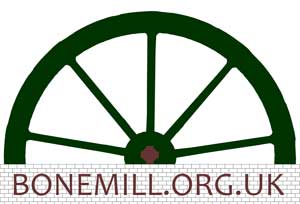Latest Maintenance: We pulled up Hemlock and other tall weeds. The dominant Corn Chamomile was thinned out to allow better diversity. Paths were kept cut throughout summer with the ride on mower when it was on site, at other times we used Barry's push mower. We carried out the Hay Cut on 21/9/23 and swept up the cuttings on 28/9/23. The meadow was re-seeded on 5/10/23. Posts were put along the edge of the meadow on 19/10/23 to prevent it being cut when the entrance track is mown and to prevent the newly seeded area being driven over, white tape makes the posts highly visible. Another insect hotel was made by the volunteers on 28/12/23.
Wildflower meadow maintenance controls weed and grass growth to ensure wild flowers are not out competed. This is achieved by keeping soil fertility low. Weeds are pulled up before they release seeds, the whole area is cut in autumn, known as the Hay Cut and cuttings are removed after allowing flower seeds to fall, so cuttings don’t rot into the soil and enrich it, as wildflowers prefer poor soil.
Meadows should be cut through winter to control grass growth, grasses are a natural attractive part of a wildflower meadow, but must not be allowed to out compete the wildflowers. Constant cutting also weakens any weeds left in the soil. Cuttings are removed to avoid enriching the soil. Advice says winter cuts should be on the highest setting, but we found growth was minimal through winter and the high setting would remove very little growth, so we left the meadow uncut until March.
The Cornfield flower area over the brick floor differs from the main wildflower meadow as the Cornfield area does not contain grasses or perennial flowers, so does not need to be cut through winter. It relies on seeds falling to the ground and coming up each year instead of plants staying in the ground. It still needs the Hay Cut in autumn as well as harrowing and rolling in early Spring to encourage germination.
Maintenance also involves re-seeding in the first few years until the seed bank builds up. We didn’t mix the seed properly when we sowed the meadow, we found out when we re-seeded the area where bundles of sticks were removed a few months after we sowed the main area. Marigolds came up there, but nowhere else, we believe Marigold seeds were at the bottom of the seed sack and were not included when we tipped about half the seed into the spreader the first time. So the following Autumn we mixed the seed thoroughly and re-seeded the whole area, as there were probably other seed species, including perennials which were not originally mixed in.
In the first year of a wildflower meadow the annual seeds flourish but perennials will not usually flower until the second season. This was the case with our meadow where mainly Corn Chamomile, Cornflowers and Poppies came up. When seeds have fallen or been spread, we need to harrow the area to encourage germination, then roll seed in to ensure good contact with the soil, this is done every autumn.
As the meadow matures, a diverse seed bank builds up and re-seeding is no longer needed, perennials also take over from the annuals, so theres no need to harrow or roll in seed. Annuals will continue to flower in the Cornfield flower area, so that still needs harrowing and rolling.
Maintenance Equipment: We needed a mower to cut our large areas of grass, but towed accessories were bought only after looking at alternatives. I asked if we could borrow the motorised roller at the maltings instead of buying a towed roller, but it was out of action. There was once a handheld seed spreader in the container, but this could not be found, so the towed spreader was bought. A harrow would have cost £200 so I made one from a scaffold board and screws already on site. The sweeper was bought second hand, saving £140. We bought a trailer for carrying sacks of sand and wildflower seeds and for clearing nettles and weeds when making the meadow, which continues to be used at work parties after the project, getting more value from it.
Graham Bartlett, Project Co-ordinator
Interactive Plan Maintenance Equipment Wildflower Meadow Gallery Volunteer About Grants
Wildflower Meadow Gallery































